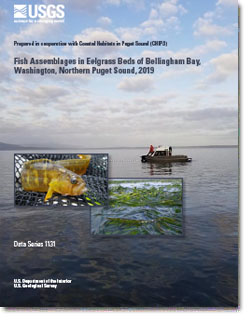Data Series 575

AbstractThis report presents the study design, environmental data, and quality-assurance data for an integrated chemical and biological study of selected streams or lakes that receive wastewater-treatment plant effluent in Minnesota. This study was a cooperative effort of the U.S. Geological Survey, the Minnesota Pollution Control Agency, St. Cloud State University, the University of St. Thomas, and the University of Colorado. The objective of the study was to identify distribution patterns of endocrine active chemicals, pharmaceuticals, and other organic and inorganic chemicals of concern indicative of wastewater effluent, and to identify biological characteristics of estrogenicity and fish responses in the same streams. The U.S. Geological Survey collected and analyzed water, bed-sediment, and quality-assurance samples, and measured or recorded streamflow once at each sampling location from September through November 2009. Sampling locations included surface water and wastewater-treatment plant effluent. Twenty-five wastewater-treatment plants were selected to include continuous flow and periodic release facilities with differing processing steps (activated sludge or trickling filters) and plant design flows ranging from 0.002 to 10.9 cubic meters per second (0.04 to 251 million gallons per day) throughout Minnesota in varying land-use settings. Water samples were collected from the treated effluent of the 25 wastewater-treatment plants and at one point upstream from and one point downstream from wastewater-treatment plant effluent discharges. Bed-sediment samples also were collected at each of the stream or lake locations. Water samples were analyzed for major ions, nutrients, trace elements, pharmaceuticals, phytoestrogens and pharmaceuticals, alkylphenols and other neutral organic chemicals, carboxylic acids, and steroidal hormones. A subset (25 samples) of the bed-sediment samples were analyzed for carbon, wastewater-indicator chemicals, and steroidal hormones; the remaining samples were archived. Biological characteristics were determined by using an in-vitro bioassay to determine total estrogenicity in water samples and a caged fish study to determine characteristics of fish from experiments that exposed fish to wastewater effluent in 2009. St. Cloud State University deployed and processed caged fathead minnows at 13 stream sites during September 2009 for the caged fish study. Measured fish data included length, weight, body condition factor, and vitellogenin concentrations. |
First posted March 17, 2011 For additional information contact: Part or all of this report is presented in Portable Document Format (PDF); the latest version of Adobe Reader or similar software is required to view it. Download the latest version of Adobe Reader, free of charge. |
Lee, K.E., Langer, S.K., Barber, L.B., Writer, J.H., Ferrey, M.L., Schoenfuss, H.L., Furlong, E.T., William T. Foreman, Gray, J.L., ReVello, R.C., Martinovic, D., Woodruff, O.P., Keefe, S.H., Brown, G.K., Taylor, H.E., Ferrer, I., and Thurman, E.M., 2011, Endocrine active chemicals, pharmaceuticals, and other chemicals of concern in surface water, wastewater-treatment plant effluent, and bed sediment, and biological characteristics in selected streams, Minnesota—design, methods, and data, 2009: U.S. Geological Survey Data Series 575, 54 p., with appendixes.
Abstract
Introduction
Study Design
Methods
Data for Endocrine Active Chemicals, Pharmaceuticals, Other Chemicals of Concern, and Biological Characteristics
Summary
References Cited
Appendixes 1–12